

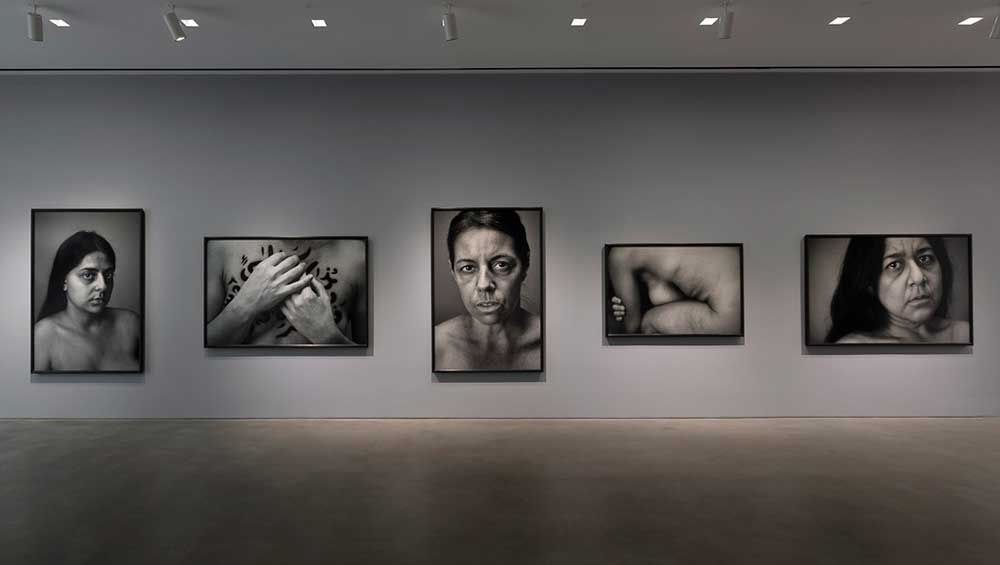
Shirin Neshat, The Fury, installation view, Gladstone Gallery, New York, 2023. Photo: David Regen. Courtesy of the artist and Gladstone Gallery.
Gladstone Gallery, New York
26 January – 4 March 2023
by LILLY WEI
The Fury, a new two-channel video by the eminent Iranian-born film-maker and photographer Shirin Neshat, oppose each other from across two walls of the Gladstone gallery, a confrontation that reiterates the countless confrontations that occur in the video (and reality). The continuity here is deliberately disjunctive, the footage capturing the scene from different points of view, different moments in time, and purportedly different places in Brooklyn and Iran (although it is all filmed in Brooklyn), jumping from street scenes to the interior of an apartment to a prison or perhaps an interrogation centre. The projection might capture the scene frontally (the female protagonist is walking towards us in one screen, but in the other screen she is seen from an angle or walking away from us), then suddenly shifts, transporting us elsewhere, playing with dimensions of space, time and memory. As in reality, it is impossible to see or take it all in, the readings partial, to be pieced together like multidimensional fragments of a (streaming) jigsaw puzzle.
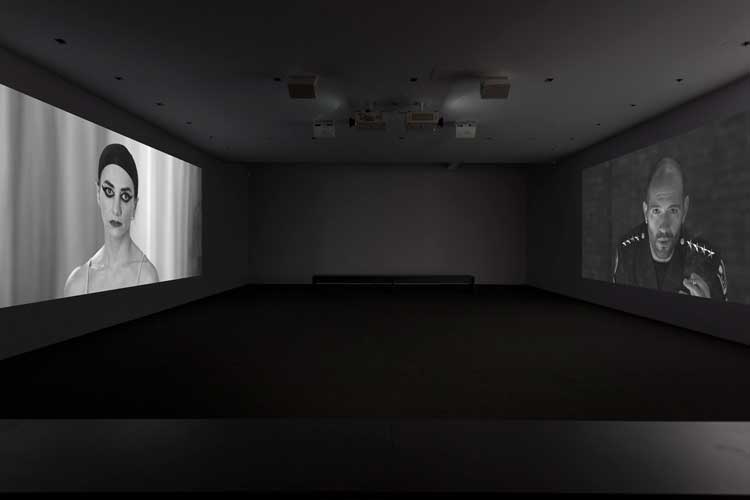
Shirin Neshat, The Fury, installation view, Gladstone Gallery, New York, 2023. Photo: David Regen. Courtesy of the artist and Gladstone Gallery.
The Fury was made in 2022 before the protests that erupted in September of that year. They followed the death of Mahsa Amini, a young Kurdish Iranian woman, while in police custody, arrested because her hair was not properly covered. The protests are ongoing and, according to the New York Times, they are the most widespread and vehement since 2009, while other sources have compared them to those of 1979 and the Iranian revolution.
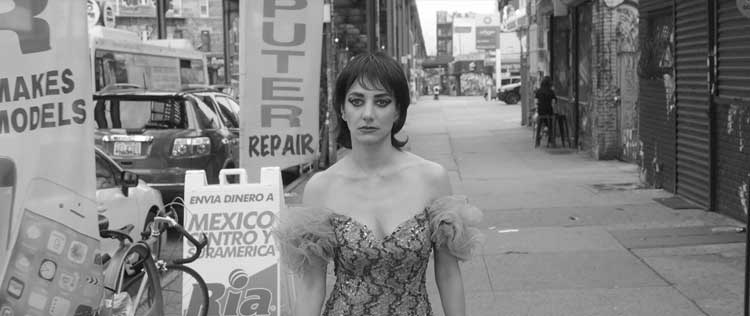
Shirin Neshat. The Fury, 2022. Two-channel video installation, HD video, monochrome, duration: 16 minutes and 15 seconds. © Shirin Neshat. Courtesy of the artist and Gladstone Gallery.
Neshat’s video was also completed before the launch of the Women, Life, Freedom (Zan, Zendegi, Azadi) movement. The words were taken from a Kurdish political chant popularised earlier and became the anthem of the protests and were also purposely deployed by the artist in this project.
Neshat pointed out – in response to criticism blasting her right to represent the women of Iran since she has lived much of her life in the US (she emigrated in 1974) – that she never intended to be a spokesperson for Iranian women. Instead, she was addressing the extreme inequities and violations suffered by women under aspects of Islamic culture and law that included rape and other forms of sexual assault, murder and lasting psychological trauma with little, if any, recourse. Neshat emphasised that it is her point of view that she is presenting and that the work itself is “fictionalised”, “stylised”, even as it addresses real issues, one reason that she films such projects in black and white, a decision that makes her videos even more cinematically and dramatically powerful.
The narrative, in a taut 13-minute video, relates the impact that imprisonment and torture had on a young Iranian woman who now lives in the US, but the emotional damage remains, even if corporeal wounds have healed. The soundtrack, always crucial, insistently propels the action, including a rousing interval of choreographed street dancing. Beautifully filmed as always, the lighting is an active presence, brightening, darkening, natural and artificial, the figures at times becoming apparitional, the location almost whited out, indicating its existence in memory.
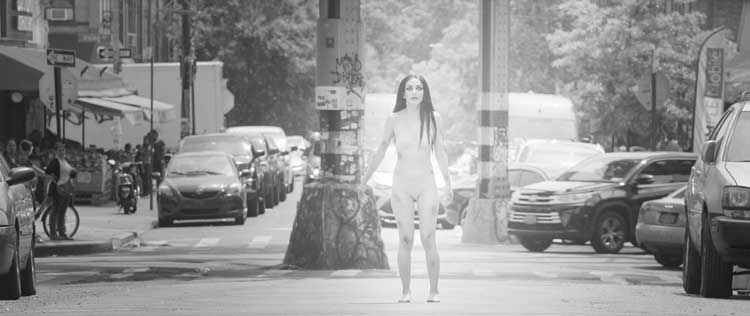
Shirin Neshat. The Fury, 2022. Two-channel video installation, HD video, monochrome, duration: 16 minutes and 15 seconds. © Shirin Neshat. Courtesy of the artist and Gladstone Gallery.
One riveting image among many is when a black woman throws back her head in a primal cry of anguish followed by a second woman who does the same, the two holding the pose for a moment, emblematic of the frustration, anger and fear that women bear, and one that, in one semblance or another, Neshat has often used.
The most harrowing and haunting scene, however, takes place in a cavernous prison or detention centre. The camera slowly pans the room, coming to rest on a solitary man or a group of men, all in uniform, then resumes its dispassionate – and terrifying – survey. It eventually focuses on the young Iranian woman, undressed except for pale undergarments that (barely) conceal her breasts and genitalia, and makes her seem even more naked, the flimsy covering a provocation. The woman is dancing for them (Ordered to do so? Attempting to please?), her slender body lithe, her eyes seductively rimmed in kohl, but she is utterly alone, defenceless, undefended, her beauty, her only weapon, a disadvantage. The men gaze at her impassively for the most part, desire subsumed and perverted into a slight derisory smirk, without a glimmer of compassion. The testosterone is palpable; I fear what they are thinking behind their expressionless faces, what they might do. They regard her as if she were (much) less than human and, because of that, they are free to do what they will, with no restrictions. Eventually, she approaches an officer leaning against the wall by himself, smoking, as if hoping to find a champion, or to ingratiate herself (I want to warn her), but he exhales smoke in her face, literally blowing her away. She staggers as if struck, as we know she will be, and we stagger helplessly with her. As the scene progresses, her previously unblemished body suddenly blooms with ugly dark bruises, truly fleurs du mal.
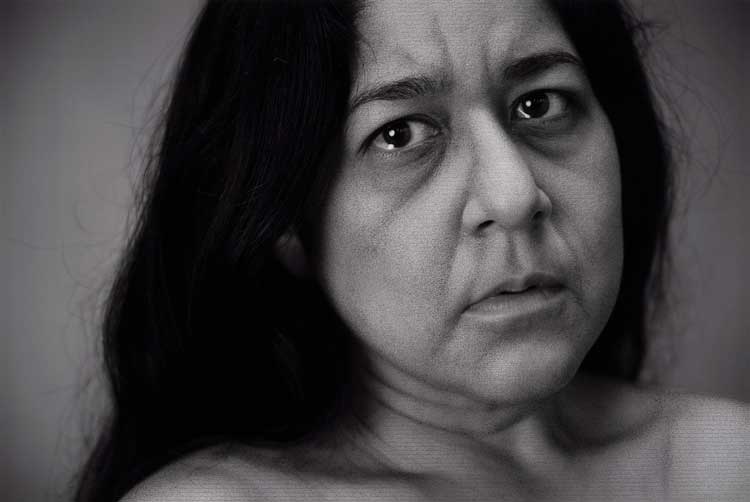
Shirin Neshat. Marry, from The Fury series, 2023. Digital c-print and ink, 48 x 72 in (121.9 x 182.9 cm). © Shirin Neshat. Courtesy of the artist and Gladstone Gallery.
The other component of the exhibition consists of a sympathetic series of black-and-white photographs of women, accompanied by poems by Forough Farrokhzad, the inclusion of calligraphic text a Neshat hallmark. The women are unapologetically naked. Some are full- length, some are headshots or closeups of their bodies, and all are unglamourised, unembellished portraits of trauma victims, auraed by the natural glamour and dignity of the human body and will.
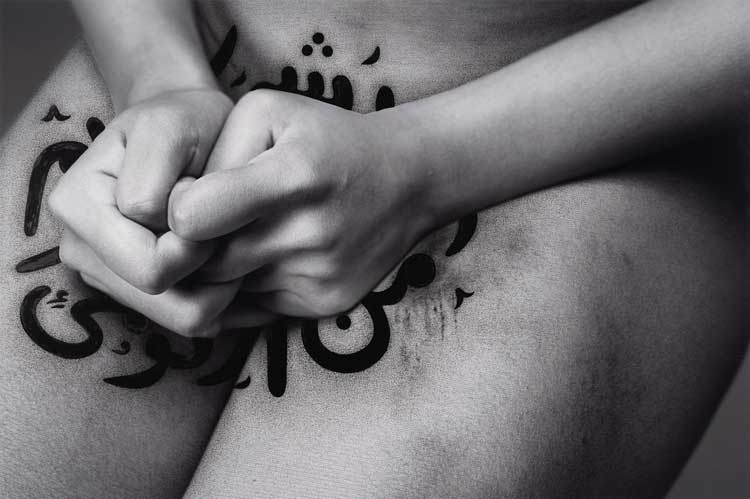
Shirin Neshat. Seema, from The Fury series, 2023. Digital c-print with ink and acrylic, 48 x 72 in (121.9 x 182.9 cm). © Shirin Neshat. Courtesy of the artist and Gladstone Gallery.
Neshat, for more than 30 years, has eloquently, poetically focused attention on women and their bodies as sites of contestation, yes, but also of agency, power. We should be grateful that she continues to do so, reminding us once again (as if we could forget) that there is still so much more to do to achieve justice in the world.